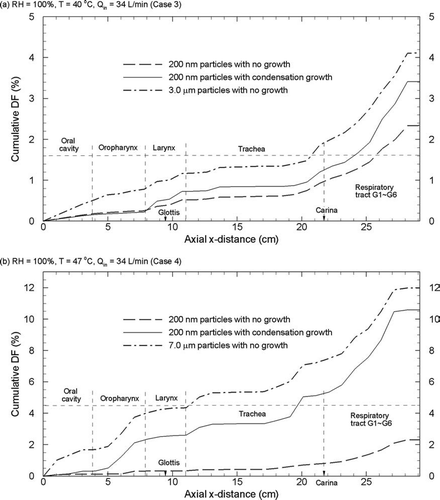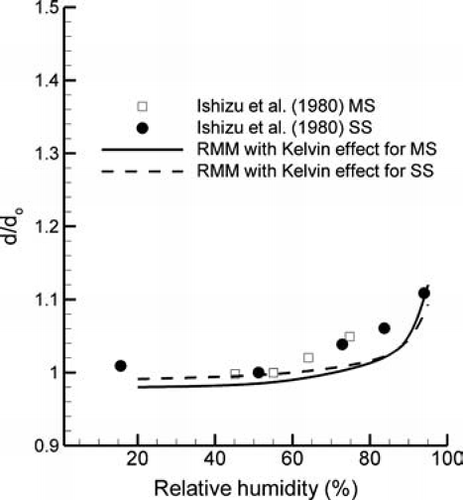Figures & data
FIG. 1 Surface model of the upper respiratory tract including the oral airway, larynx, and upper tracheobronchial region as viewed from the (a) front and (b) back. The surface model extends through respiratory generation G6 along some paths.
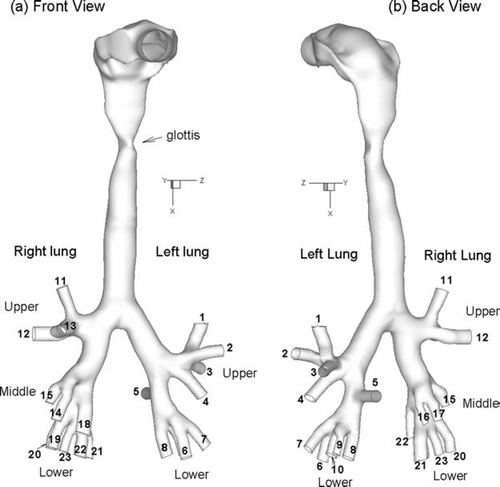
TABLE 1 Initial temperature and relative humidity conditions at the mouth inlet ranging from sub-saturated to saturated conditions
TABLE 2 Name, cross-sectional area, and flow ratio of the outlet bronchi
TABLE 3 Initial properties of cigarette smoke particles (CSPs) for mainstream (MS) and sidestream (SS) conditions
FIG. 2 Comparison of submicrometer particle deposition with existing experimental results for the (a) mouth-throat (MT) geometry, and (b) tracheobronchial (TB) region.
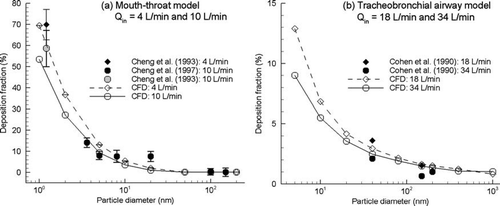
FIG. 3 Equilibrium diameter change vs. initial particle size (d o ) due to hygroscopic growth for mainstream (MS) and sidestream (SS) smoke particles at relative humidity (RH) values of (a) 99.5% and (b) 99.75%.
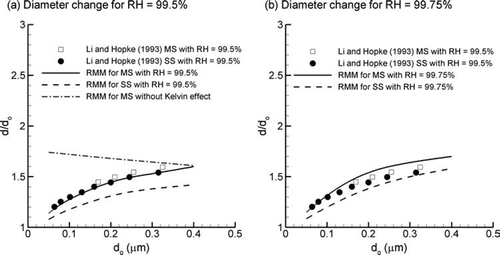
FIG. 5 Time history of CSP size change as a function of RH for (a) condensational growth and (b) evaporation.
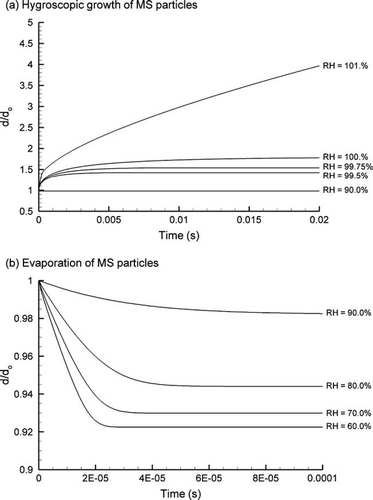
FIG. 6 Steady state temperature profiles for inhalation Case 2 (Tinlet = 27°C, RHinlet = 60%): (a) in the midplane, and at selected cross-sectional slices of the (b) mouth-throat, (c) right lung, and (d) left lung.
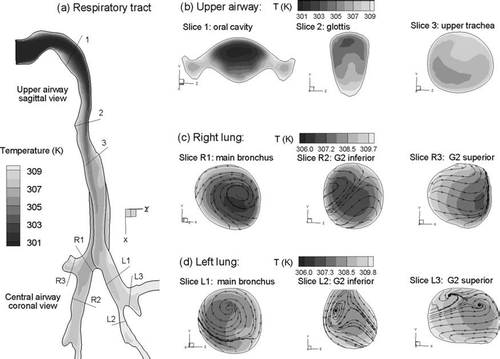
FIG. 7 Steady state RH profiles for inhalation Case 2 (Tinlet = 27°C, RHinlet = 60%): (a) in the midplane, and at selected cross-sectional slices of the (b) mouth-throat, (c) right lung, and (d) left lung.
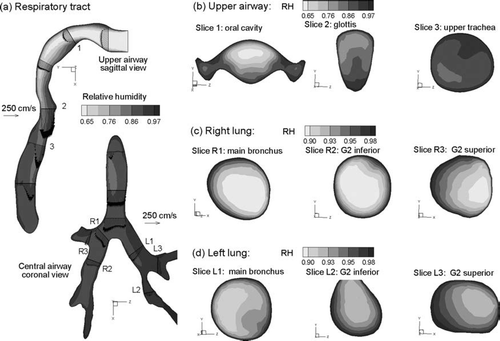
FIG. 8 Steady state temperature profiles for inhalation Case 3 (Tinlet = 40°C, RHinlet = 100%): (a) in the midplane, and at selected cross-sectional slices of the (b) mouth-throat, (c) right lung, and (d) left lung.
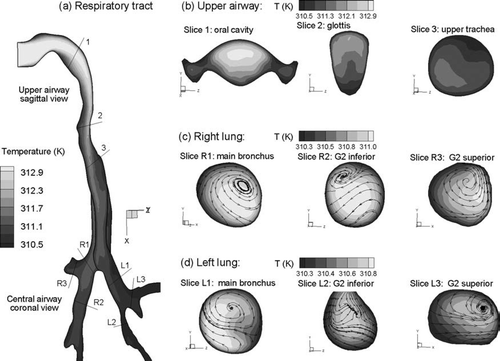
FIG. 9 Steady state RH profiles for inhalation Case 3 (Tinlet = 40°C, RHinlet = 100%): (a) in the midplane, and at selected cross-sectional slices of the (b) mouth-throat, (c) right lung, and (d) left lung.
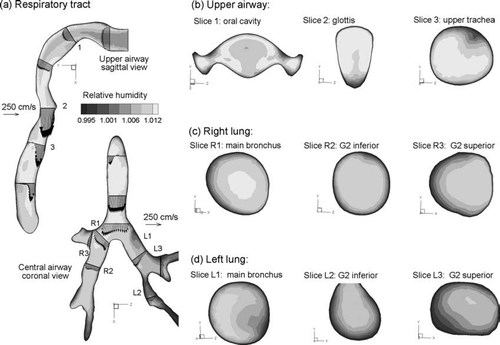
FIG. 10 Droplet trajectories colored according to transient size for inhalation conditions (a) Case 1, (b) Case 2, (c) Case 3, and (d) Case 4.
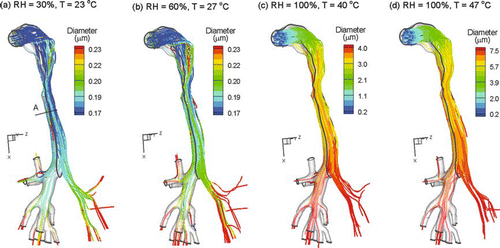
FIG. 11 Particle size distribution presented as mass fraction per micrometer for initially 200 nm particles under (a) sub-saturated and (b) saturated conditions; as well as 400 nm particles under (c) sub-saturated and (d) saturated conditions.
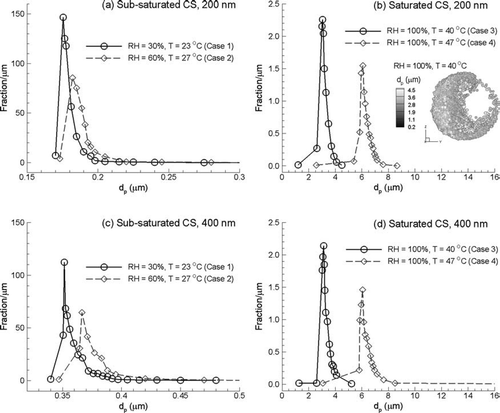
TABLE 4 Particle size statistics with evaporation and condensational growth in the upper respiratory airway sampled at Slice A
FIG. 12 Deposition under Case 3 inhalation conditions for initially 200 nm particles (a) without condensational growth and (b) with condensational growth. The associated deposition enhancement factor (DEF) is shown (c) without condensational growth and (d) with condensational growth.
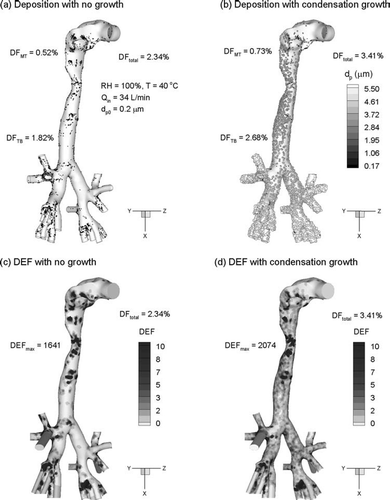
FIG. 13 Cumulative particle deposition fraction (DF) as a percentage along the x-axis of the geometry for (a) Case 3 and (b) Case 4 inhalation conditions.
